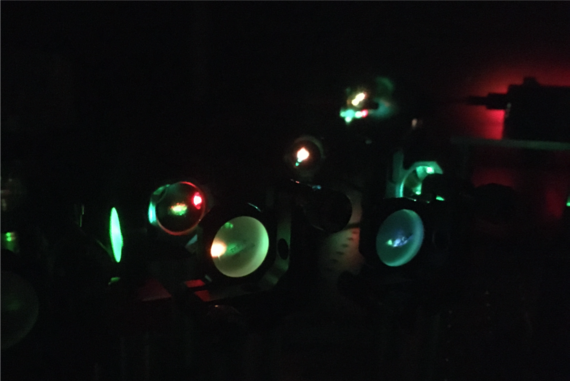Sources of single photons play an important role in the development of new quantum technologies. Making single photons accessible for applications poses a big challenge in the development of this rapidly growing field. Due to their low photon rates it is particularly difficult to effectively couple the emission while suppressing the noise as good as possible. Furthermore, a thorough understanding of all the relevant optical properties, like line width, quantum efficiency and lifetime of the emitters, is needed for direct applications.
For these reasons our group is conducting research on novel quantum emitters to make their properties applicable.



Spectroscopy of Defect Centers in Solids
Defect centers in atom lattices are promising candidates for integrated systems due to their high photo stability.
In recent years such defect centers in hexagonal Boron Nitride (hBN) have gained a lot of attention for their spectral properties. The quantum efficiency of these emitters depends strongly on the excitation wavelength and especially under simultaneous excitation with various wavelengths the emission rate can be increased significantly. This effect hints towards the existence of additional energy levels and yields information about the lifetimes of the different excited states.
To investigate the specific properties and their underlying level structure we are conducting spectroscopic measurements on these emitters.



Cryogenic Microscopy for Quantum Emitters
Single-photon sources are a resource for quantum technologies specifically in quantum sensing and quantum key distribution applications.
Generating single photons is mostly achieved using single emitters such as atoms, ions, quantum dots, defect centers, or two-dimensional materials.
These new sources not only need to be spectrally compatible with other photonic devices also they are expected to be bright for photonic circuits.
The organic molecules are prominent single-photon sources since they are simultaneously deliver a high flux and a narrow-band emission. Nevertheless, the implementation of this sources requires a complex experimental setup under cryogenic conditions to avoid the limitations by photobleaching of molecules.
Via resonant excitation scheme, the molecules will be excited on their zero-phonon line and will be detected in another polarization mode at the same wavelength. This allows circumventing the red-shifted Raman emission for single-photon detection.
The molecules are driven by IR-laser in two different configurations: either by free-space excitation or through the fiber. For an effective collection of the fluorescence emission of molecules, we devise a confocal microscope integrated with a carrier stick inside continues-flow liquid helium. Under specific preparations, the temperature falls to 1.4K down inside the stick which guaranties the long-time stability of molecules.



